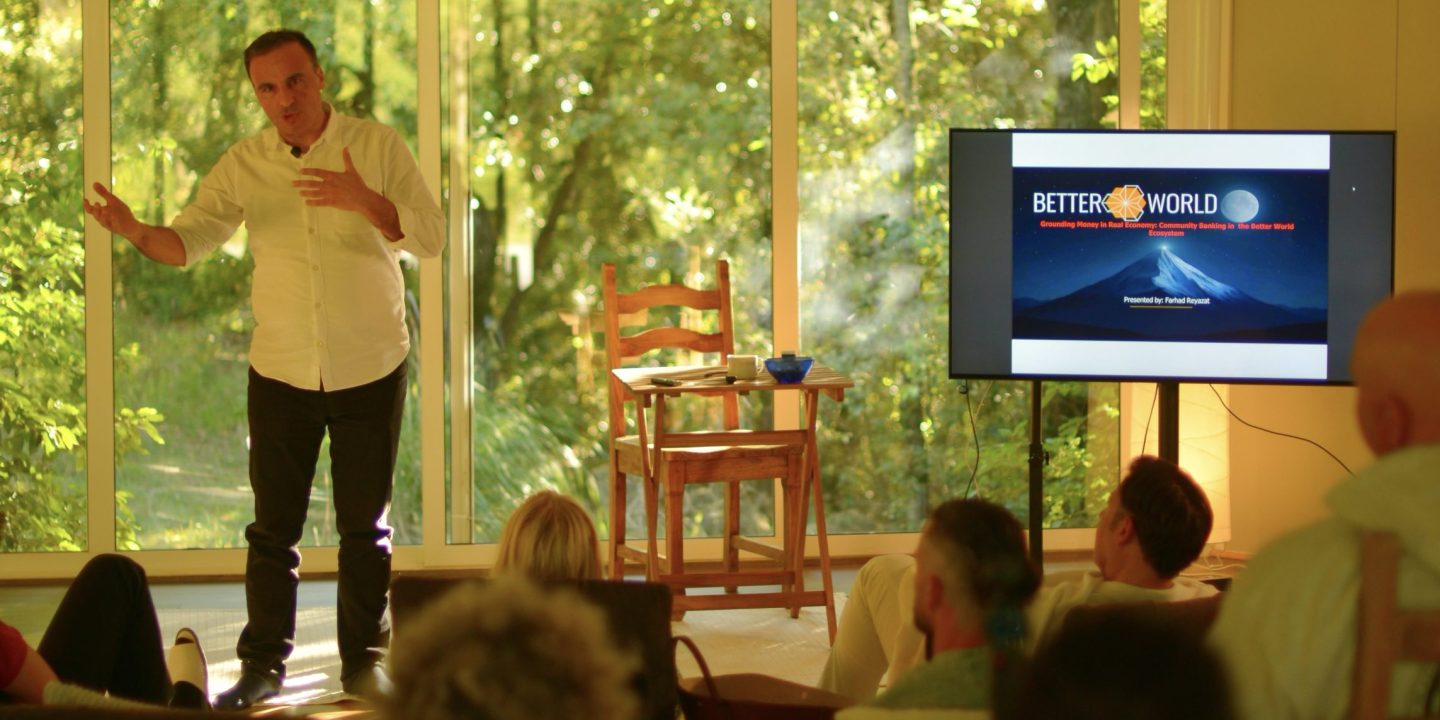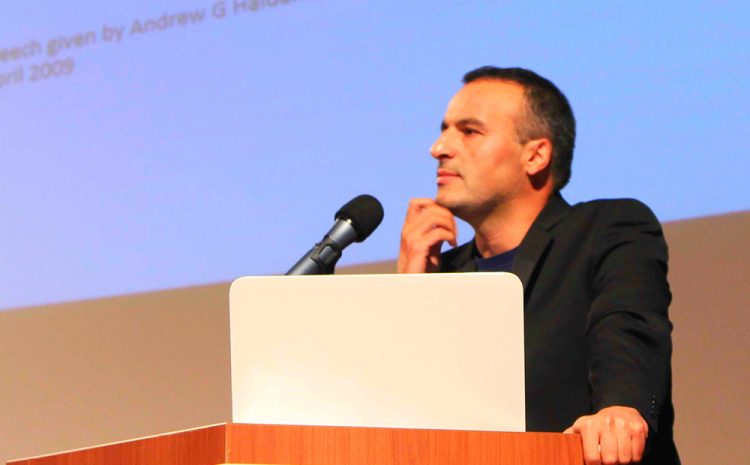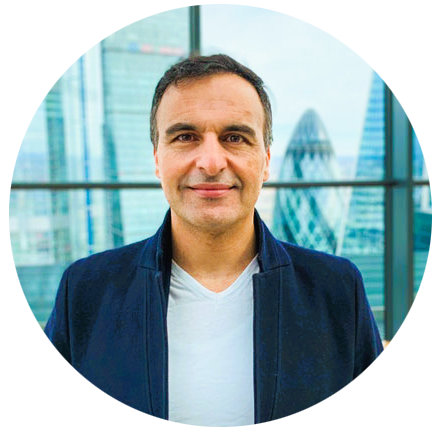
Culture, Cumulative Innovation, and Creative Destruction: Nobel Lessons for a Regenerative Economy
Farhad Reyazat – PhD in Risk Management. London Institute of Banking and Finance
Citation: Reyazat, F. (2025, October 29). Culture, Cumulative Innovation, and Creative Destruction: Nobel Lessons for a Regenerative Economy. London Institute of Banking and Finance https://www.reyazat.com/2025/10/29/culture-cumulative-innovation-and-creative-destruction-nobel-lessons-for-a-regenerative-economy/
Introduction: The Civilization of Growth, From Ideas to Renewal
Over the past twenty-five years, I’ve worked at the intersection of academia, technology, and finance, researching systemic risk, building tech-driven enterprises, and experimenting with models of community banking and regenerative finance. Across these worlds, one insight has guided me: every enduring form of progress begins not with capital or policy, but with culture, with how a society treats knowledge, curiosity, and change.
Two centuries ago, humanity made that leap. The Industrial Revolution was not merely a technological event; it was a cultural awakening. People began to believe that ideas could be shared, improved, and trusted that progress, not preservation, was the organizing principle of civilization. That shift, from fear of change to faith in improvement, unlocked a self-reinforcing engine of innovation that still powers our world today.
This year’s 2025 Nobel Prize in Economic Sciences recognizes the intellectual architecture of that transformation. The prize was shared between Joel Mokyr, who uncovered why innovation became cumulative and self-sustaining, and Philippe Aghion and Peter Howitt, who formalized how that very process of creative renewal drives long-term prosperity. Together, their work explains not only the birth of modern economic growth, but also how societies can keep it both resilient and regenerative.
Mokyr’s work speaks to the upstream conditions of change, how openness, scientific literacy, and the ability to “learn how to learn” create economies that evolve continuously. His view resonates deeply with my experience in systemic thinking: sustainable growth arises when ideas compound across disciplines, when institutions encourage experimentation rather than conformity, and when knowledge becomes a shared commons rather than a private asset.
Aghion and Howitt, meanwhile, focus on the downstream mechanics of renewal, the market forces and policy frameworks that allow new ideas to replace the old. Their models of creative destruction mirror what we see in the real economy: the constant cycle of innovation and obsolescence that drives progress, yet also produces social tension and inequality if unmanaged. Their work reminds us that disruption must be guided by ethics, inclusion, and foresight, not left to chance.
Together, these thinkers offer two halves of the same engine of prosperity. Mokyr’s culture of growth explains how knowledge and curiosity ignite progress; Aghion and Howitt’s creative destruction explains how that progress stays alive through renewal and competition. One provides the spark; the other ensures momentum.
In the pages that follow, we first explore both stories —the cultural ignition of cumulative innovation through Mokyr’s lens —and then the competitive mechanics of creative destruction through Aghion and Howitt’s framework. We’ll also connect these lessons to the questions that have defined my own journey in systemic investing and community banking:
How do we design economies that not only grow but heal?
How can innovation become regenerative, not extractive?
And how do we balance the freedom to create with the responsibility to sustain?
Ultimately, this article argues that the true evolution of economics lies not in efficiency, but in regeneration in systems that learn, adapt, and give back more than they take. The story that began in the Industrial Revolution must now evolve into a new civilization of growth, one that measures progress not by GDP alone, but by the resilience of our communities, ecosystems, and shared future.
The Long Dawn of Growth: How Joel Mokyr Rewrote the Story of Human Progress
For most of human history, life stood still. Empires rose and fell, cities were built and forgotten, yet the average person’s living standard barely moved. A farmer in ancient Mesopotamia and one in 17th-century Europe might have lived worlds apart in time but not in comfort. Their incomes, their diets, even their daily tools changed little. Humanity invented writing, architecture, ships, and plows, but the miracle of sustained growth never came. Then, around two hundred years ago, something extraordinary happened. The world’s engines of production and invention didn’t just roar to life—they never turned off again.
This is the mystery that economic historian Joel Mokyr has spent a lifetime trying to solve: why did progress suddenly become permanent? Why did societies that had known stagnation for millennia suddenly enter an era where knowledge, technology, and prosperity began to build upon themselves in an unstoppable chain reaction?
The Puzzle: The Sudden Escape from Stagnation
Mokyr begins with a striking observation: the Industrial Revolution was not humanity’s first age of invention. The Chinese had invented paper, gunpowder, and the compass centuries before Europe industrialized. Islamic scholars in Baghdad’s golden age advanced algebra and medicine. The Romans built aqueducts that still stand today. Yet none of these civilizations achieved sustained, cumulative growth. Their progress was episodic—a burst of brilliance here, a golden century there—followed by long silences.
So what changed in the late eighteenth century, particularly in Britain and Western Europe, that turned the flickering candle of innovation into a blazing torch? Mokyr’s answer is both elegant and radical: invention alone was never enough. What mattered were the conditions that allowed innovation to become cumulative, each discovery building upon the last, spreading across societies, and feeding a virtuous cycle of improvement.
The Secret Ingredient: Cumulative Innovation
In Mokyr’s framework, “cumulative innovation” means more than just creativity. It is a process where ideas do not die with their inventors but evolve, multiply, and combine. Each discovery becomes a stepping stone for the next. It’s the difference between a single spark and a fire that spreads.
Mokyr breaks this down into three essential ingredients:
- Practical knowledge – Not just knowing that something works, but why it works. This is the scientific understanding that transforms guesswork into mastery.
- Mechanical competence – The hands-on ability to turn abstract knowledge into tangible machines, tools, and processes.
- Institutional and cultural openness – A social environment where ideas are shared, debated, tested, and refined rather than hidden or suppressed.
When these three forces come together, innovation stops being random. It becomes self-reinforcing. Knowledge accumulates, techniques improve, and invention becomes a continuous process rather than a series of isolated accidents.
This is the heart of Mokyr’s insight: ideas are non-rival; they can be shared without being used up. Unlike physical goods, when you teach an idea, you still keep it. And when societies find ways to exchange and build on ideas freely, the result is exponential growth.
The Great Transformation: What Changed 200 Years Ago
Around the turn of the nineteenth century, a set of social and cultural shifts transformed Europe into a laboratory of progress. Mokyr identifies several interlocking forces that together ignited the modern age of growth.
A. A Culture of Inquiry and the Birth of Scientific Optimism
During the Enlightenment, Europe witnessed a profound change in how people thought about knowledge. The old dogma that the world was fixed and unchangeable gave way to a belief that nature could be understood, harnessed, and improved. Scholars and inventors corresponded across borders in what Mokyr calls the “Republic of Letters,” an open, international network of thinkers who shared discoveries and challenged conventions.
This era’s heroes were not kings or warriors but experimenters, engineers, and thinkers. The motto was clear: knowledge should not be guarded; it should be grown. Scientific understanding and practical tinkering began to feed each other in a loop. A machine-maker studying pressure or heat could turn to science for principles, while scientific curiosity often arose from industrial challenges. The worlds of theory and practice fused.
B. Institutions that Favored Curiosity over Control
Europe’s political fragmentation—so often a source of conflict—became an unexpected advantage. Unlike empires that centralized authority and controlled knowledge, Europe’s patchwork of competing states fostered experimentation. If one ruler censored ideas, a thinker could move to another territory. Competition between nations became competition in innovation.
Printing presses, journals, and public lectures amplified this effect. Knowledge flowed more freely, ideas found more ears, and invention became part of public life. In contrast, in large unified empires such as Qing China, where knowledge was often controlled and dissent discouraged, innovation tended to stagnate after brief bursts of creativity.
C. The Rise of Mechanical Competence
At the same time, a new breed of artisans and engineers emerged, people who could turn the ideas scientists imagined into reality. Steam engines, textile machinery, and metalworks became the playgrounds of both craftsmen and scholars. The ability to “tinker intelligently” became widespread, bridging the gap between imagination and implementation.
This mechanical competence created a feedback loop: each invention made the next one easier. A better steam engine led to better tools; better tools led to better machines. Soon, innovation became a continuous stream rather than a series of isolated miracles.
D. From Leaps to a Stream
Before this transformation, most technological breakthroughs were local and temporary. They improved productivity in one corner of the world but rarely changed the entire system. In Mokyr’s telling, modern growth began when the economy itself became a knowledge engine—an organism that thrives on its own learning. Every improvement sparked new questions, new experiments, and new industries. Progress became permanent.
The Virtuous Cycle: How Growth Became Self-Sustaining
When the Enlightenment’s curiosity met industrial engineering and institutional openness, something irreversible happened. Knowledge began to compound. Science-inspired technology; technology-funded science. Each round of progress created more resources, more learning, and more capacity to innovate.
In Mokyr’s words, modern growth was not just faster, it was different in kind. Humanity had entered a regime where improvement was the default, not the exception. The economy had learned how to learn.
Why Some Civilizations Stayed Behind
Mokyr is careful to reject simple geographic or racial explanations. Many non-European societies, such as China, India, and the Islamic world, had astonishing technological sophistication. But innovation there often remained confined within narrow circles or constrained by hierarchy and tradition. Knowledge did not circulate freely; inventors were craftsmen, not collaborators.
Europe’s advantage, Mokyr argues, was not innate genius but an ecosystem, a living network of competition, openness, and curiosity that rewarded novelty instead of punishing it. Fragmentation bred diversity, and diversity bred resilience.
Lessons for Today: What Mokyr Teaches Modern Economies
Mokyr’s history is not just about the past; it’s a manual for the future. He reminds us that growth is not guaranteed. Innovation can stall if societies forget how to nurture it. His framework points to clear lessons:
- Promote scientific literacy, not only in universities but across the workforce.
- Encourage openness and exchange ideas thrive where borders, both intellectual and political, are porous.
- Value skilled craftsmanship and applied knowledge, not just abstract research.
- Codify and share knowledge through education, open data, and collaborative institutions.
- Protecting the growth of freedom of inquiry depends on the right to question the old and imagine the new.
For developing nations today, Mokyr’s message is especially relevant: innovation ecosystems must be built, not assumed. Machines matter less than minds—and minds thrive where curiosity is safe.
Unfinished Questions
Even Mokyr admits that some mysteries remain. Why Europe, and not elsewhere? Why that specific moment in history? His theory is powerful but not complete—measuring cultural openness or mechanical skill across centuries is no simple task. And today, new challenges—climate change, political polarization, and institutional inertia—threaten to slow the very engine Mokyr described.
Still, his insight endures: progress is fragile, but it is also learnable. The miracle of modern growth was not a gift of fate, it was a cultural choice.
A Culture of Growth
Joel Mokyr’s significant contribution is to remind us that the Industrial Revolution was not just a technological event; it was a cultural awakening. It began when humanity decided that knowledge could be shared, improved, and trusted, when people stopped fearing change and started organizing societies around the pursuit of the better.
That decision, made two centuries ago, still fuels every innovation today, from the steam engine to the microchip, from the printing press to the internet. Growth, Mokyr shows us, is not just an economic phenomenon; it is a civilizational mindset: a belief that tomorrow can be better, and that we can make it so.
The Engine of Renewal: How Aghion and Howitt Turned “Creative Destruction” into the Mathematics of Growth
For decades, economists struggled with a paradox: everyone could see that modern economies were transforming before their eyes, industries collapsing, new ones rising, technology reshaping daily life, but the standard economic models could not explain why this process created sustained prosperity. Innovation appeared in those equations like a mysterious wind: an external “shock” that arrived from nowhere, boosting productivity before fading away again.
Then came two scholars, Philippe Aghion and Peter Howitt, who decided to make that invisible wind visible. They asked a bold question: What if we could write down, in the language of mathematics, the very process by which innovation destroys the old and gives birth to the new?
Their answer would reshape modern growth theory and, decades later, earn them the 2025 Nobel Prize in Economic Sciences.
Schumpeter’s Vision, Reborn in Equations
The roots of their work stretch back to the Austrian economist Joseph Schumpeter, who in the early 20th century coined one of the most evocative phrases in economics: creative destruction. Schumpeter saw capitalism not as a calm, balanced system but as a storm of perpetual renewal. Every new invention, he argued, was both creator and destroyer: it produced new wealth but also wiped out the old ways of doing things. Steamships replaced sailboats; the automobile buried the carriage; the digital camera erased Kodak’s empire.
Yet, while Schumpeter’s image was compelling, it remained metaphorical. Economists had no formal way to model it. The dominant theories of the postwar period treated technological progress as an exogenous factor, something that happened, outside the system, like good weather.
Aghion and Howitt, who began collaborating in the late 1980s, wanted to fix that. They sought to bring Schumpeter’s drama of his cycles of invention, competition, and obsolescence inside the mathematical machinery of economics. They wanted to rigorously show how growth could emerge endogenously from the very process of innovation and replacement.
The 1992 Breakthrough: “A Model of Growth Through Creative Destruction”
Their 1992 paper in Econometrica—a journal known for its elegance and precision—was a revelation. In “A Model of Growth Through Creative Destruction,” Aghion and Howitt turned Schumpeter’s intuition into a structured, testable model.
They imagined an economy built not on steady accumulation but on a ladder of innovation, each new technology climbing above and replacing the last. In their model:
- Firms invest in research and development (R&D) to discover the “next step” up the ladder: a better product, a more efficient method, a new idea.
- Each innovation displaces its predecessor. When a new firm introduces a superior technology, the incumbent loses its advantage—its machines, patents, and profits become obsolete overnight.
- Growth, therefore, depends on two things: the speed at which innovations arrive, and the rate at which old technologies become obsolete. The economy’s vitality lies in this tension between creation and destruction.
They also showed something subtle but profound: firms’ expectations about future obsolescence affect how much they invest today. If an innovator believes her breakthrough will be quickly replaced, she may hesitate to invest heavily. Thus, the fear of being overtaken can both stimulate and constrain innovation.
The result was a self-contained, dynamic model that could generate the patterns of real-world capitalism booms and slowdowns, waves of technological diffusion, even periods of stagnation when institutions or incentives stifled the creative impulse.
What Made Their Theory Revolutionary
1. From “More” to “Better”
Earlier models of growth, such as those by Paul Romer, focused on variety, adding more goods, more inputs, more production lines. Aghion and Howitt instead concentrate on the quality of each innovation, making existing goods obsolete by replacing them with better ones. Growth wasn’t about expansion; it was about evolution.
2. Competition and the Battle Between Old and New
Their model captured a fundamental tension in capitalism: incumbents want stability, while newcomers thrive on disruption. Too little competition, and innovation slows; too much, and firms stop investing because they fear short-lived rewards. Economic growth, they showed, depends on maintaining a delicate balance between protection and rivalry, between security and renewal.
3. The Shadow of Obsolescence
Innovation comes with anxiety. Every firm knows that today’s success may be tomorrow’s ruin. By including expectations of obsolescence, Aghion and Howitt’s model reflected this psychological realism. It explained the cyclic rhythm of innovation periods of frenzy followed by caution.
4. Policy Implications
Their model didn’t just describe growth—it gave policymakers a map. If innovation drives prosperity, then institutions must manage both its light and its shadow. How do we help displaced workers? Should we subsidize R&D? How do we design patent systems that reward discovery without locking out competitors? Their work provided a scientific framework for answering these questions, not an ideological one.
From Equations to the Nobel Prize
The Econometrica paper quickly became a cornerstone of what economists now call Schumpeterian growth theory. It inspired hundreds of papers exploring innovation, market structure, and the political economy of creative destruction.
Over the years, Aghion and Howitt expanded their ideas into books like Endogenous Growth Theory (1998) and The Economics of Growth (2009). They applied their framework to everything from education policy to climate innovation, studying how openness, competition, and institutional quality shape long-term prosperity.
By 2025, their influence was unmistakable. The Nobel Committee cited them “for the theory of sustained growth through creative destruction,” recognizing that they had transformed Schumpeter’s poetic metaphor into a precise tool for understanding and managing the modern economy.
As the committee noted: “They show how new technology can drive sustained growth … as the companies that previously had the best products are outcompeted.” In other words, progress survives only when yesterday’s champions can be replaced.
Why It Matters Today
The world that Aghion and Howitt described three decades ago feels even more relevant now. Artificial intelligence, automation, and green technologies are rewriting industries and unsettling livelihoods. Their model helps us see these transformations not as accidents, but as the very heartbeat of capitalism.
Yet it also warns that creative destruction must be managed. If incumbents, be they corporations or governments, become too powerful, they can choke innovation to protect their interests. On the other hand, if societies fail to cushion those who lose in the process, political backlash may smother the very creativity that drives progress.
For educators, entrepreneurs, and policymakers, the lesson is clear:
- Encourage curiosity and experimentation.
- Build institutions that reward risk-taking while also providing pathways for those displaced by change.
- Teach that innovation isn’t only about creation, it’s also about the courage to let go of what no longer serves.
The Human Story Behind the Theory
Behind the equations lies a simple human insight: progress is uncomfortable. Every act of invention unsettles someone’s stability. Every breakthrough rewrites the social contract. Philippe Aghion and Peter Howitt dared to face that truth mathematically, showing that disruption, while painful, is the price of advancement.
Their work reveals growth not as a smooth ascent, but as a relentless cycle of birth and death, hope and loss, discovery and obsolescence. It’s the story of humanity itself: always building, always breaking, always beginning again.
And that, perhaps, is why the Nobel Prize in 2025 felt inevitable. They didn’t just explain how economies grow they explained why growth must hurt to heal.
In the ever-turning wheel of creative destruction, Aghion and Howitt gave us a compass: a way to navigate the turbulence of change, without losing faith in the power of renewal.
Why These Ideas Matter for Social Impact and the Regenerative Economy
At first glance, Mokyr’s “culture of growth” and Aghion & Howitt’s “creative destruction” may seem like theories confined to the world of factories, patents, and production lines. But in truth, they strike at the moral and systemic heart of today’s greatest challenge: how to make progress sustainable, inclusive, and regenerative.
Both remind us that the Industrial Revolution was not just a technological event; it was a cultural awakening. It began when humanity made a collective decision: that knowledge could be shared, improved, and trusted. That we could organize societies not around preservation of the old, but around the pursuit of the better. That decision still powers our age from the steam engine to the microchip, from the printing press to the internet. Growth is more than an economic curve; it is a civilizational mindset, a belief that tomorrow can be better and that we can make it so.
However, the missing truth is that progress has a cost. The model of creative destruction teaches that growth is never smooth. It is, instead, a perpetual cycle of birth and death, hope and loss, discovery and obsolescence. Every innovation lifts some people up while displacing others. Every wave of progress forces a reckoning with what and who is left behind.
In the context of social impact and the regenerative economy, this insight is vital. Our century faces disruptions as profound as those of the 19th: artificial intelligence, automation, climate adaptation, green technologies, and new social finance systems are rewriting industries, livelihoods, and the social contract itself. These forces are not random shocks; they are the heartbeat of the economy. They drive renewal, but without thoughtful design, they can also deepen inequality, degrade ecosystems, and erode trust.
A regenerative economy seeks to break that cycle of damage by learning from it. It accepts that disruption, while painful, is the price of advancement but it insists that the fruits of that advancement must replenish, not exhaust, the systems that sustain us. The same cultural awakening that once allowed humanity to share knowledge freely must now extend to how we share prosperity, opportunity, and responsibility.
Regeneration begins with a culture of curiosity and openness, one that democratizes knowledge, fosters experimentation, and builds institutions that learn faster than they fail. The vision of cumulative innovation applies as much to social systems as to technologies: education reform, community banking, and regenerative agriculture all thrive when ideas compound across generations, rather than dying with one project or funder.
Regeneration is not comfor,t it is managed disruption. Old industries, extractive models, and outdated hierarchies will resist replacement. The transition to a green and just economy requires policy frameworks that balance competition with care, innovation with inclusion, and transition with protection. If incumbent corporations, governments, or even large NGOs become too entrenched, they can suffocate new solutions. But if we neglect those displaced by change, social backlash can stall transformation entirely.
Thus, the regenerative path forward lies in what both theories together teach:
- Cultural openness to share and grow knowledge across disciplines, sectors, and borders.
- Institutional humility to allow new models to replace the obsolete, without fear or protectionism.
- Social cushioning to ensure that those left behind by innovation find pathways back into purpose and security.
- Systemic vision to treat progress as a living cycle of renewal, not a linear race of consumption.
In essence, the same intellectual revolution that began two centuries ago must now evolve. The next age of growth will not be measured by GDP but by the regeneration of ecosystems, communities, and meaning itself. If we are to build a better world, we must remember what both halves of this Nobel story teach: progress is neither automatic nor free. It requires courage to change, wisdom to manage loss, and faith that the future, once again, can be better than the past.
References:
Aghion, P., & Howitt, P. (1992). A model of growth through creative destruction. Econometrica, 60(2), 323–351. https://doi.org/10.2307/2951599
Aghion, P., & Howitt, P. (1998). Endogenous growth theory. MIT Press.
Aghion, P., & Howitt, P. (2009). The economics of growth. MIT Press.
Aghion, P., Antonin, C., & Bunel, S. (2021). The power of creative destruction: Economic upheaval and the wealth of nations. Harvard University Press.
Mokyr, J. (2002). The gifts of Athena: Historical origins of the knowledge economy. Princeton University Press.
Mokyr, J. (2009). The enlightened economy: An economic history of Britain 1700–1850. Yale University Press.
Mokyr, J. (2017). A culture of growth: The origins of the modern economy. Princeton University Press.
Nobel Prize Organization. (2025). The Sveriges Riksbank Prize in Economic Sciences in Memory of Alfred Nobel 2025 – Press release. NobelPrize.org. https://www.nobelprize.org/prizes/economic-sciences/2025/press-release/
Romer, P. M. (1990). Endogenous technological change. Journal of Political Economy, 98(5, Part 2), S71–S102. https://doi.org/10.1086/261725
Schumpeter, J. A. (1942). Capitalism, socialism and democracy. Harper & Brothers.
Reyazat, F. (n.d.). Biography. Retrieved October 29, 2025, from https://www.reyazat.com/my_bio/






4 replies on “Culture, Cumulative Innovation, and Creative Destruction: Nobel Lessons for a Regenerative Economy”
The Real Person!
Author Nathalie acts as a real person and passed all tests against spambots. Anti-Spam by CleanTalk.
Very relevant and timely content. Appreciate you sharing this.
The Real Person!
Author Jay acts as a real person and passed all tests against spambots. Anti-Spam by CleanTalk.
Your content always adds value to my day.
The Real Person!
Author Jumail acts as a real person and passed all tests against spambots. Anti-Spam by CleanTalk.
I love how clearly you explained everything. Thanks for this.
The Real Person!
Author Omid acts as a real person and passed all tests against spambots. Anti-Spam by CleanTalk.
What a great resource. I’ll be referring back to this often.